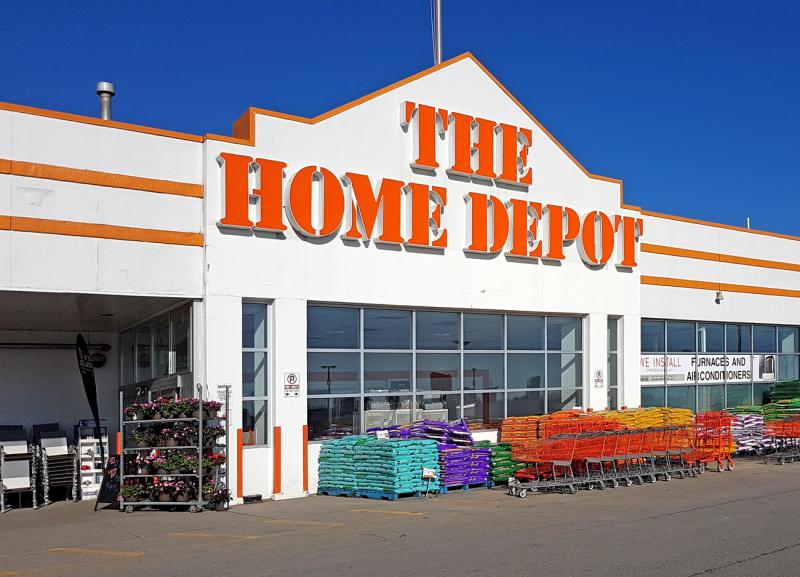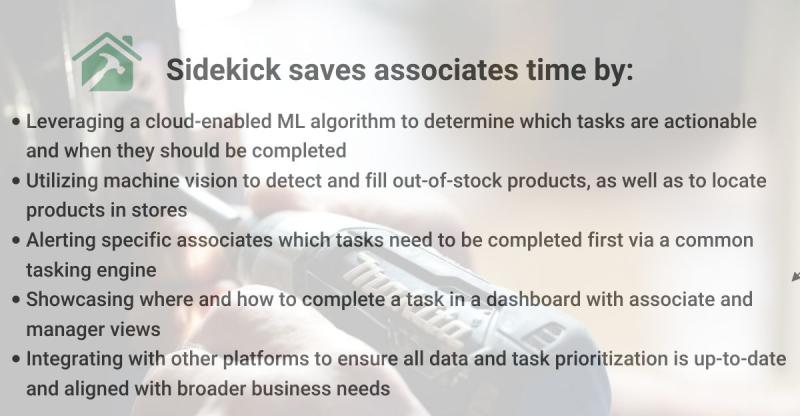Exclusive Q&A: The Home Depot’s VP for Store Technology Talks Mobile Strategy
The Home Depot’s mobile strategy, and technology advice, is pretty manageable when you break it down. Make it enjoyable for customers and simple for associates — tapping a cloud-first approach to power it all.
RIS recently spoke with Muzammil Akram, The Home Depot’s VP for store technology, to learn how the development and rollout of the retailer’s latest homegrown technology — the Sidekick mobile app — panned out.
Akram leads The Home Depot’s store systems team and is responsible for building software systems and platforms that run the massive scale of operations across the home improvement retailer’s 2,300-plus stores, serving millions of customers and 500,000 associates.
The retailer’s homegrown app Sidekick was developed to help store associates prioritize tasks more effectively and is a new addition to hdPhones, the company’s mobile devices dedicated to improving the associate and customer experience.
The Sidekick release closely follows the launch of the hdPhones, developed in collaboration with Zebra Technologies, HPE and Aruba, a Hewlett Packard Enterprise Company. Since the launch, The Home Depot has rolled out more than 99,000 devices across U.S. stores.
“All scheduled associates on our sales floors will have an hdPhone available to them,” Akram tells RIS, and the company will continue to roll out new capabilities on these mobile devices to empower its store associates to serve customers and perform highest value tasks efficiently, he notes.
The new Sidekick app, powered by machine learning (ML), guides associates to prioritize the highest demand product, which shelf to restock, and the location of the excess product on overhead shelves. The Home Depot started installing Sidekick late last year and completed the rollout to all U.S. stores in January.
“There were no major surprises with the rollout because of our user-centric design approach with short iteration cycles and upfront architectural decisions,” Akram notes.
On the heels of the rollout, he offers this advice to peer retailers looking to develop their own homegrown apps for employees:
“Develop tools and apps that ultimately serve your customers and make it a more enjoyable, seamless experience for them, whether that’s online, in-store, or both. Simplify associate tools and platforms by making them easier to learn. Use a cloud-first approach to power the interconnected shopping experience.”
The following is an edited Q&A of RIS News editor-in-chief Jamie Goodman's discussion with Akram:
RIS: What went into the process of developing Sidekick?
Muzammil Akram: Our team is composed of innovative, forward-thinking designers, engineers, product managers, and store operations that are constantly building cutting-edge solutions to exceed our customers’ needs. To build Sidekick, we listened closely to the needs of our associates to deliver a product that helped improve our associates’ day-to-day. We were able to expedite feedback cycles with our frontline associates, iterate in short cycles, and seamlessly integrate Sidekick into our enterprise tech stack.
Tell us more about leveraging a cloud-enabled ML algorithm to determine which tasks are actionable?
We’ve been leveraging cloud services for years, and were even one of the first Google Cloud customers back in 2016. Since then, we’ve used the cloud to support many aspects of our technology infrastructure and deploy customer facing projects such as intent search, and support our Rent Online, Pick-up In Store reservation service for equipment rentals, as a few examples. Solving business problems using predictive machine learning models is an important tool in our toolkit, and it’s ripe for inventory tasking given the volume and hygiene of data available to train the models and create actions and insights.
How is The Home Depot using machine vision to keep inventory in stock?
Using images of products on shelves and overhead locations, pre-trained machine vision models process these images to identify out-of-stock products that need to be filled, and location of those products for easy navigation.
What are the benefits you’re seeing so far from associates using the Sidekick app?
Sidekick helps our associates focus on the highest-value tasks that help remove friction for our customers, and it allows associates to help customers find products and spend more time serving the customer. Associates love the simplicity of user interface and clear directions to complete their tasks.
What additional tech plans do you have ahead for 2023?
Every technology project we build is centered around customer-backed research and feedback, and we’re always looking for ways to simplify associate tools and platforms so they’re more efficient and easier to learn. We’re excited to introduce new capabilities, products, and experiences to help make home improvement an easier, more seamless experience for our customers.
We will continue to analyze emerging technologies, such as computer vision and machine learning, and evaluate how The Home Depot can utilize these technologies to best drive value for our customers and remove friction from their shopping experience.





